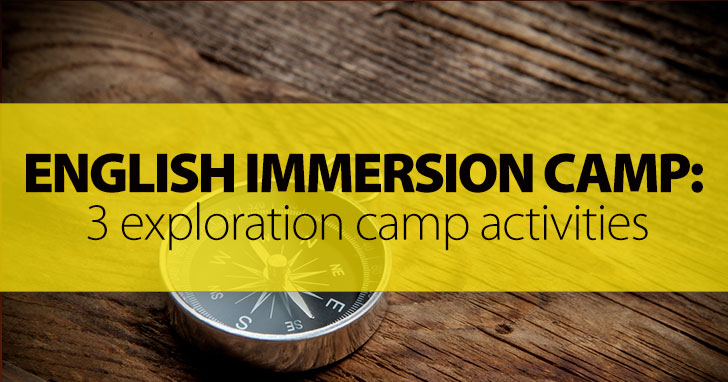English Immersion Camp: 3 Exploration Camp Activities


A 2-Day Adventure Camp that is simple and short – as well as unique and fun – may work for you! With these 9 steps, you can plan a camp from start to finish in a week, and maybe even make some extra money when your class schedule is vacant.

Ask students 1) what they want to do over vacation, 2) if they would participate in an activity, and 3) how much money they would spend on an activity. You should be able to visualize a budget and participation number from a quick five minute conversation.
One of the barriers to having any sort of camp is cost. The greatest cost with a camp is the venue. Here are some ideas of places where you can host a camp that will keep costs down and also be adventure platforms for fun activities!
Students need lunch, 2 snacks, and drinks. You can eliminate this cost by telling students to pack and bring everything, or minimize the cost by asking them to bring lunch and only catering snacks. Have a water cooler available to minimize drink costs. Food is a great way to entice students, however! Also eating time can be fun, especially if you plan food games, like sandwich building contests where students can only put the foods that they can name in English on their buns.
Based on your location and desired budget, plan activities for students to practice depending on their learning level and age. The keys are to disguise as much learning as possible as adventure games and to stick to review as opposed to learning new concepts. For examples:
Adults will probably respond poorly to a game, so disguise learning activities with an adult theme or a value-added activity. If you are at a park hiking, you can give each student five secret vocabulary words and task her/him to work those words into conversation as much as possible throughout the morning. Also prepare conversation interview questions for them and have them hike in pairs and talk about a childhood event, or a work story. At lunch or at a hiking rest, ask them to relay what they learned about their partners and see if students can guess what the secret words of their colleagues mean!
Estimate a working budget so you can establish price for your students. Elements of your budget will be:
If your students are disadvantaged, ask a local corporation to underwrite the costs. Banks are great suspects; you can send a one page letter outlining your cause and then call the manager and visit her for a conversation a few days later. You can also receive food gift certificates or credits from a number of grocery store chains, such as Safeway.
Make a simple flyer highlighting the fun/adventure aspects of the camp, advertising costs, and providing details of place, location, dates, and times. Invite all students personally with a flyer.
On the flyer and verbally, give an RSVP and deposit date for the camp. A deposit is necessary to ensure participation, and probably to cover your set up costs. Set the deadline before your class ends.
After you have an idea of how many are coming, recruit volunteers to help organize and plan the event. These can be one or two parents or a motivated student that wants a discount on their camp fee!